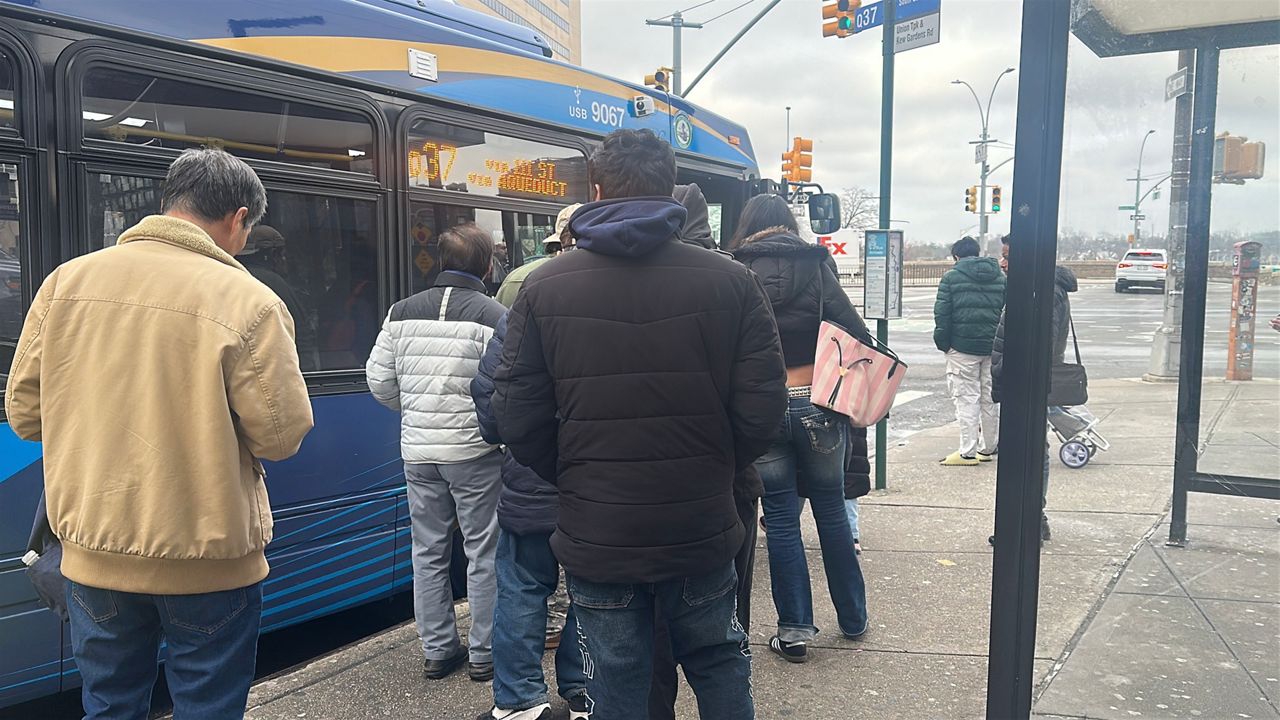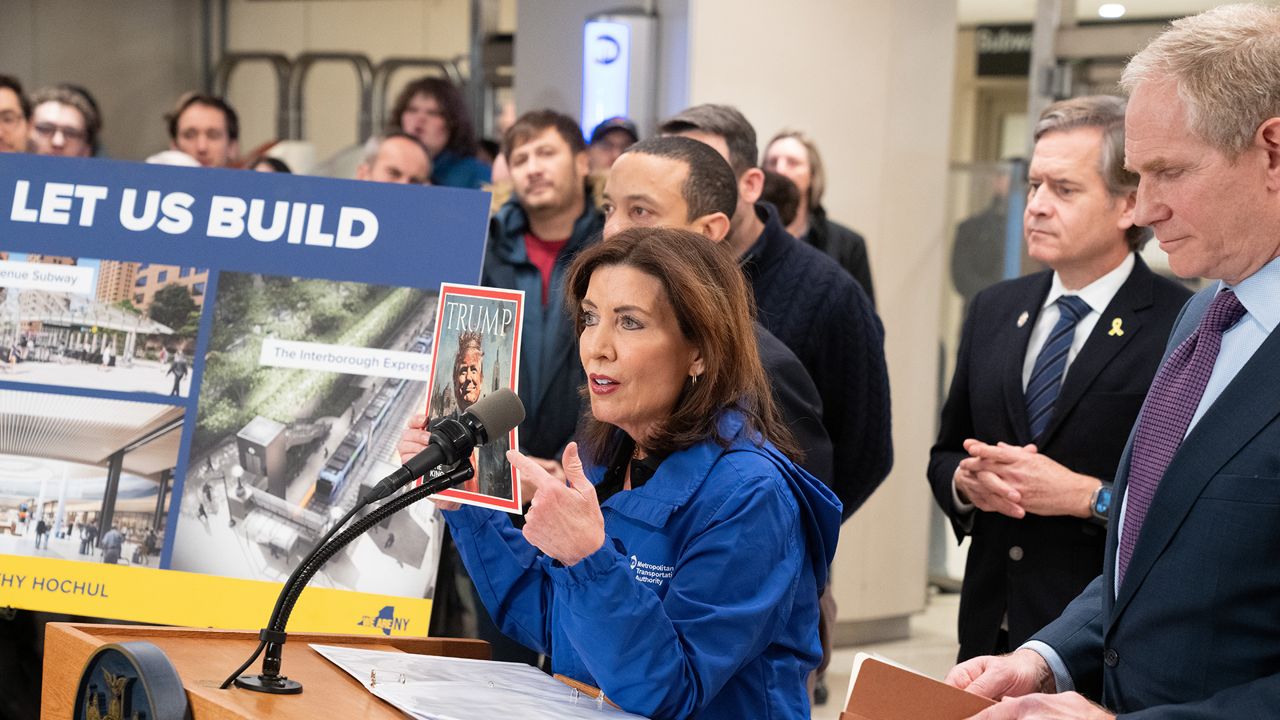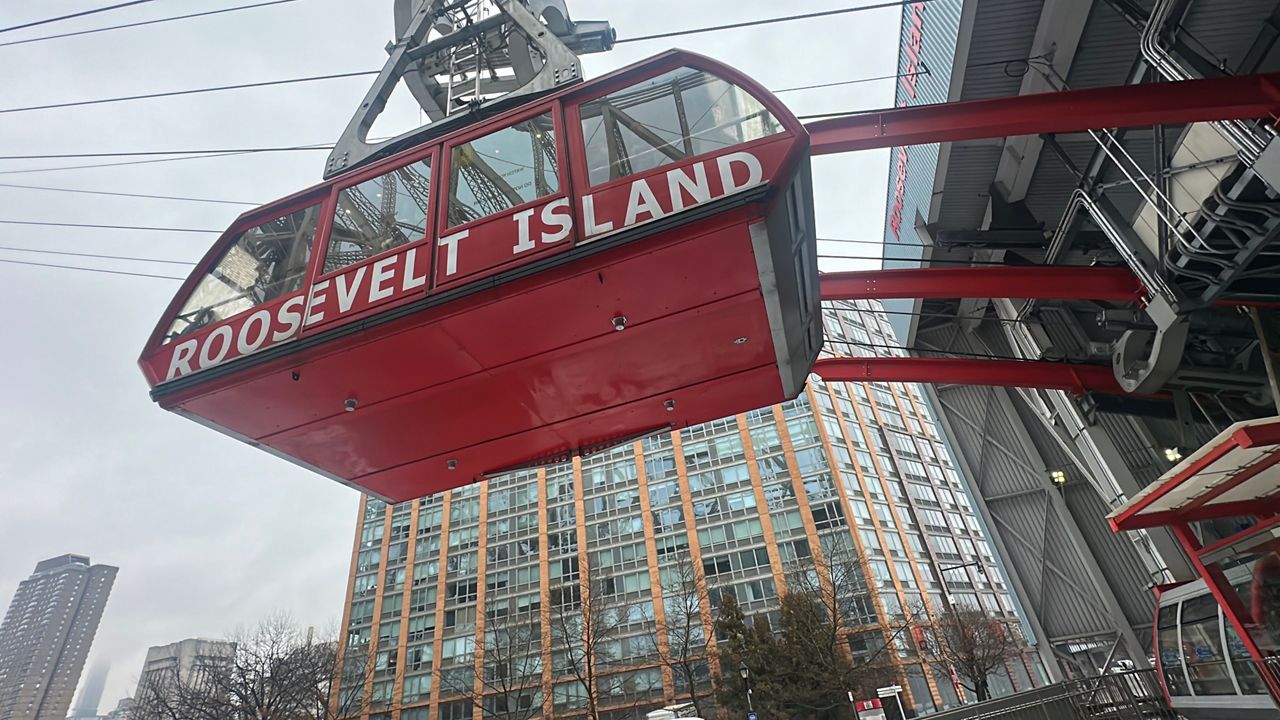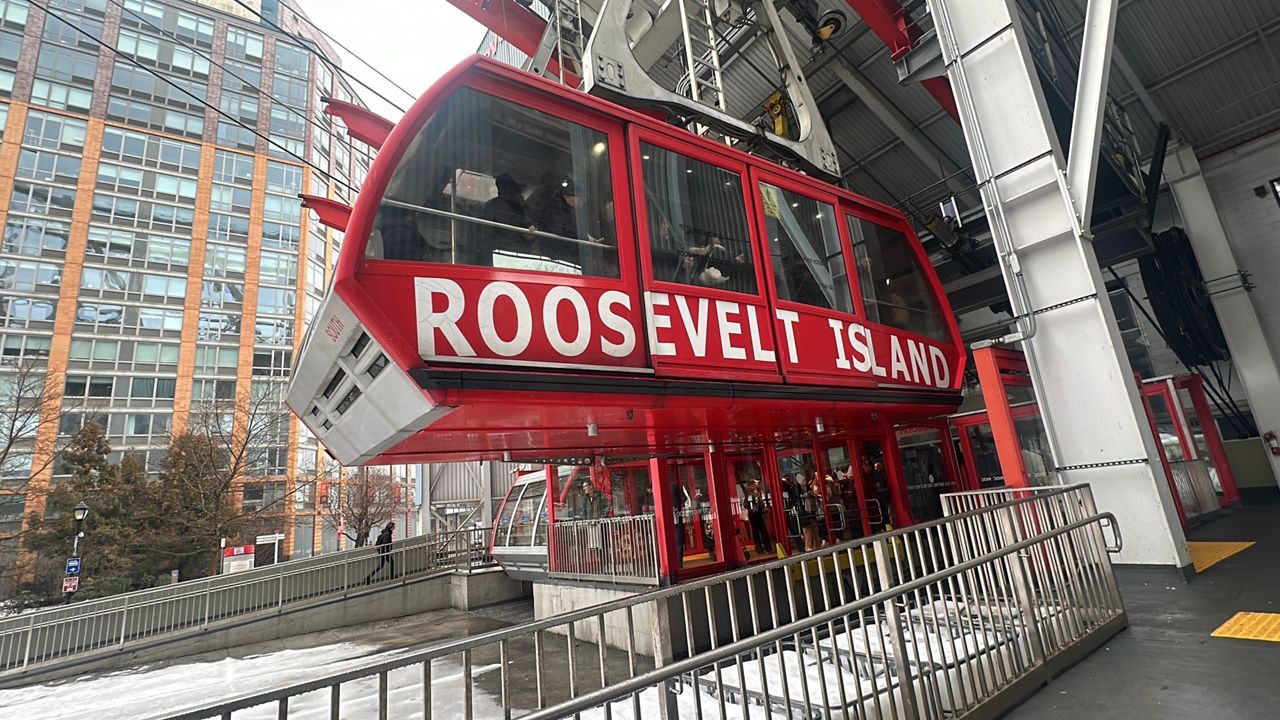On Tuesday, Gov. Kathy Hochul said the pause on congestion pricing does not mean the end of major projects for the MTA.
“I said we’re just looking at a pause. New Yorkers don’t need this right now,” Hochul said at an unrelated event. “Does not mean that we will not find funding for the Second Avenue subway or the wheelchair accessibility, all the ADA work that we’re going to be doing, all the signalization we’re doing, the Interboro Express. None of those stopped.”
But just hours later, the agency that she controls made an announcement that contradicted her.
What You Need To Know
- The Regional Plan Association identified nearly 100 MTA projects that received $10 billion in federal money that required a local match, which could be at risk because of the congestion pricing pause
- Gov. Kathy Hochul said the MTA doesn’t need the money now but the agency already stopped work on phase two of the Second Avenue subway
- Assembly Speaker Carl Heastie said he speaks regularly with the governor but that they have not discussed an alternative funding source or bringing the legislature back to Albany to find one
“We have stopped work on Second Avenue subway,” MTA Construction and Development President Jamie Torres-Springer said.
Work was being done to relocate utilities. The first contract awarded on the project was late last year. Phase two of the Second Avenue extension will add three stations, bringing the Q train to 125th Street.
It’s one of nearly 100 projects the Regional Plan Association says the MTA received federal funding for.
Now, the association, environmental and business groups are writing to the MTA and the Federal Transit Administration to get more clarity on how many of those projects are at risk.
“There’s programmed about $10 billion give or take dollars from the federal government to the MTA for various projects,” Kate Slevin, executive vice president at RPA, said. “And without a local match, so without the revenue from congestion pricing, all of that money is now in jeopardy.”
While the governor says the money will be there, there is still no second plan or a plan for lawmakers to return to Albany anytime soon.
“We haven’t spoken about anything specific about coming back or how to fund it,” Assembly Speaker Carl Heastie said, referring to one of his conversations with Hochul. “It has to be a three-way agreed-upon plan for me to have the members come back.”
He said there has been no discussion of a plan, which would most likely be a new tax, since the end of the session.
“I wouldn’t say there’s no options,” Heastie said. “I mean the options are congestion pricing or raising revenue, so that’s pretty much the options, so we’ll just figure it out.”
And while Hochul said there’s no hurry, she seemed unaware Tuesday when her administration and the federal government concluded the plan would generate $1 billion a year.
“And the money that would have been raised would have taken about a whole year to raise about $400 million,” she said. “So we wouldn’t have had a billion this year.”
Thursday, her spokesperson clarified that she was referencing a New York City Independent Budget Office report that said congestion pricing would raise $400 million by the end of 2024.
But the federal government concluded the plan would raise $1 billion per year. The MTA was to sell $15 billion in bonds, a significant portion of the MTA’s capital plan.
“It would have been about 60% of the funding that we have left,” Torres-Springer said. “There will be implications all over our capital program.”
The MTA has said what’s left is $28 billion of work, but only $13 billion left to spend, and the priority now on keeping the system from crumbling.
The agency is now working on slimming down the capital plan, which will be presented at its board meeting next week.









